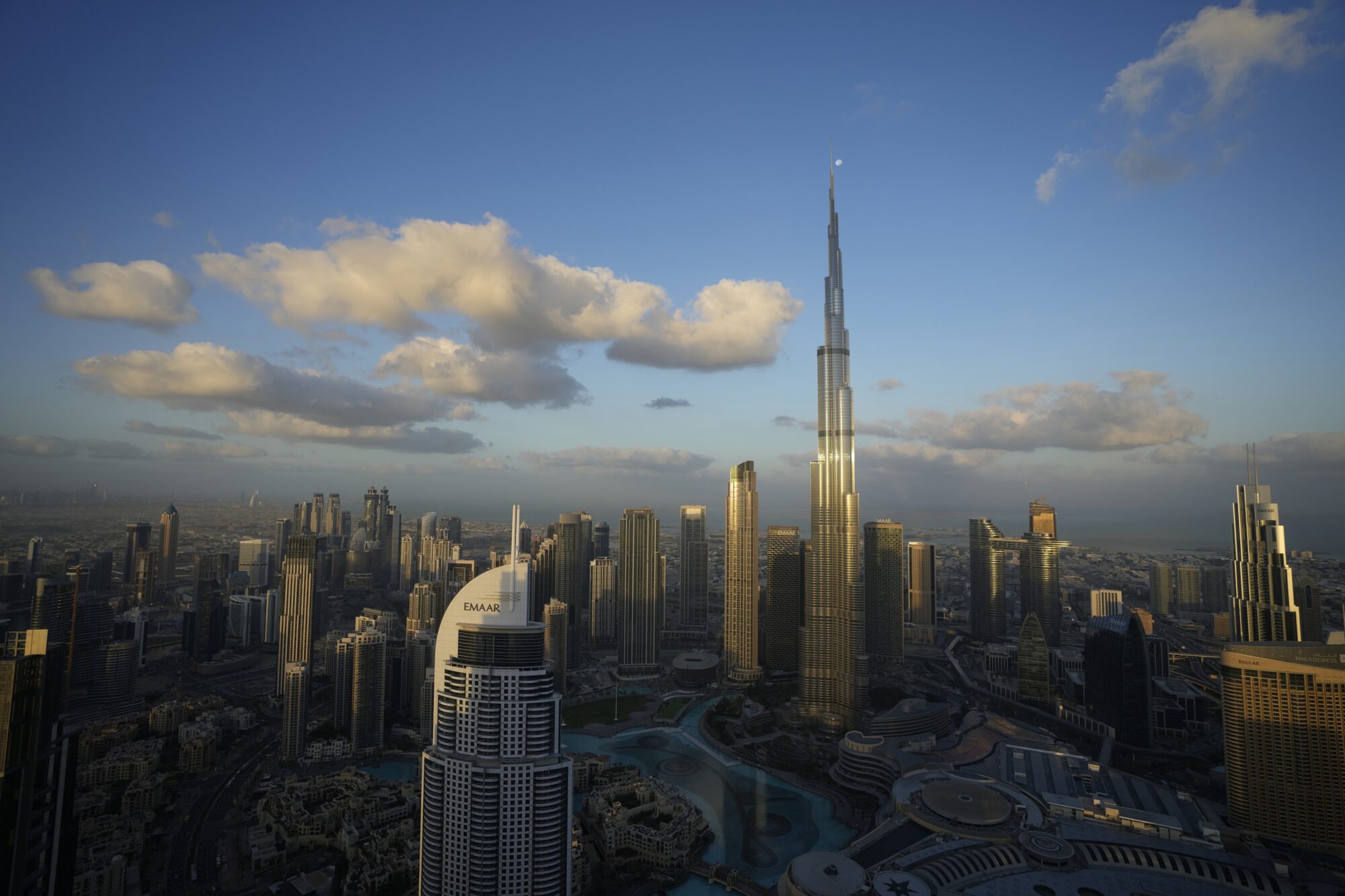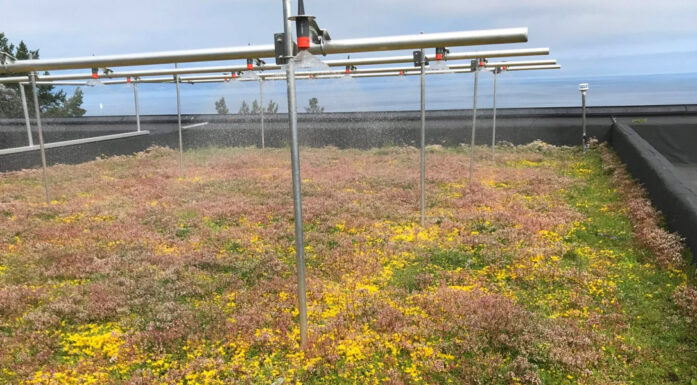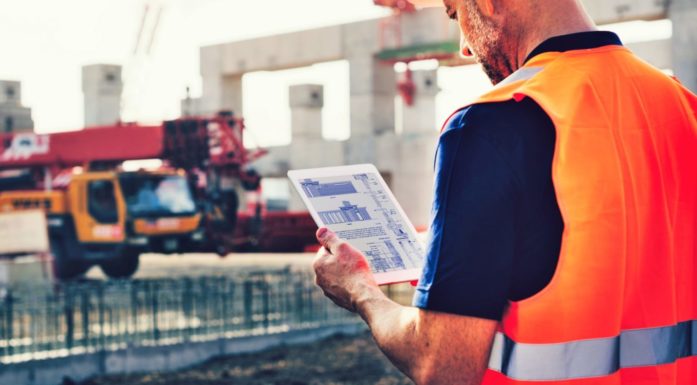The energy footprint of architecture built by oil
Four of the six Gulf States are among the top five biggest greenhouse gas emitters per capita. Why? Oil is the answer, but not quite in the way you might think.
The six Middle East countries in the Gulf Cooperation Council are located in one of the harshest places on the planet. Temperatures on hot summer days can top 50 degrees C. Access to water in these desert lands is also challenging.
Now, as leaders from across the globe gather in Dubai for international climate talks, a new report shows how the discovery of oil in the region radically changed housing stocks, enabling a shift from traditional to energy-intensive Western architecture. As a result, four of six Gulf States now rank among the world’s worst greenhouse gas emitters, measured on a per person basis.
This high share of residential energy use is very unusual for countries with this level of income. Here we have a high-consumption economy.
“These countries are wealthy and electricity prices are subsidized by the government. So instead of investing in insulation or high quality materials, they just turn up their air-conditioning systems,” says Sahin Akin, a PhD candidate in NTNU’s Industrial Ecology Programme (IndEcol).
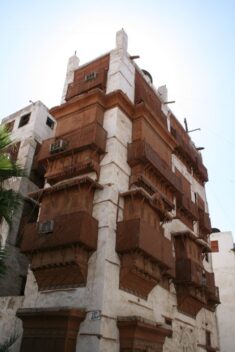
This traditional house in Al Balad, Jeddah, Saudi Arabia, shows the screened external porches. While it has many traditional features, it also features a more modern invention – the air conditioner. Photo: Broad Arrow, Wikimedia Commons
Akin’s research was part of a larger effort at IndEcol to look more closely at regional differences in residential buildings worldwide. Residential buildings worldwide matter, because they account for fully 21 per cent of global energy use, and the materials used in their construction are responsible for 30 per cent of the global carbon footprint for overall materials production.
In this case, understanding how different kinds of housing drive energy and materials use can help policy makers adopt specific measures to help lower each country’s greenhouse gas emissions.
- You might also like: People over 60 are greenhouse gas emissions bad guys
Building types important
Akin and his colleagues can’t look at every individual residential unit, of course, because that would be impractical. So what they did instead was to group related kinds of housing units into average types, which they called archetypes. All told, the researchers created 153 simulation models, boiled down to 6 different types, to describe typical housing in the region.
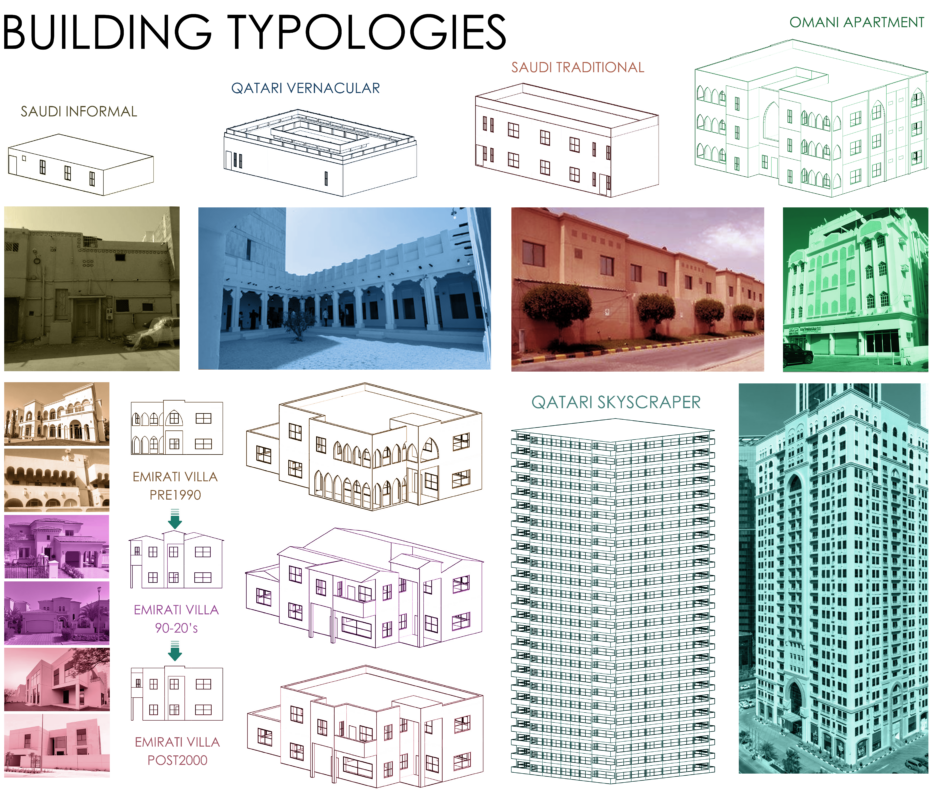
These are some of the examples of building types the researchers examined as they put together energy and material use assessments of the Arabian Gulf States. Graphic: Sahin Akin, NTNU
Before oil wealth changed the economic landscape in these countries, many people lived in traditional housing, Akin said.
“These were built by using traditional construction techniques and using local materials such as mud, adobe, and wood in some cases. So they were really good in terms of environmental performance,” he said, mainly because the structures were designed to cool passively, without the aid of air-conditioning, but also because they didn’t require the import of building materials.
- You might also like: Rapid action can help prevent the worst consequences of global warming
Oil wealth, urbanization and the growth of the villa
The arrival of oil wealth resulted in more rapid urbanization in many of the countries, and the increased construction of a housing type that the researchers call a villa.
These structures can be two or three floors high, and can have separate entrances for men and women, in keeping with Muslim practice. There may also been housing for hired workers, such as housemaids and child care providers.
Population in the region went from 7.7 million in 1970 to 59.5 million in 2022, and is expected to jump to 73.4 million by 2050, according to figures from the United Nations.
The result of this trend is that while villas only accounted for 22 per cent of the total number of units in the Gulf region, they accounted for more than half of the total floor area. They tended to be very spacious, with an average of 62 m2 per person, which is nearly double the world average of 32 m2 per person.
And they can be energy intensive, Akin said.
Akin’s analysis found that among more populous countries such as Saudi Arabia and the UAE, the total amount of energy use was high, while smaller countries with higher GDP per capita, like Kuwait, Qatar, and Bahrain, had higher energy use per capita.
“This trend could be linked to the relatively high percentage of villas in the building stocks of these small countries, which use more energy than other building types,” he said.
- You might also like: Wax, wood and CO2
Population growth a factor, too
Oil wealth also drove another important trend – population. Population in the region went from 7.7 million in 1970 to 59.5 million in 2022, and is expected to jump to 73.4 million by 2050, according to figures from the United Nations.
Oil wealth allowed more children to survive, and with a fertility rate of 6 births per woman, led to a quick growth in the native population. In addition, Akin says, oil wealth attracted immigrants in search of jobs. Workers were also recruited by families to work in households. While some villas might have housing for household help, many expatriates were housed in apartments or condominiums.
“We see these two distinct groups in the rich countries, expats living in condos and natives living in villas. These have differences in terms of energy use and materials, mostly by having more living space per person in villas,” said Edgar Hertwich, the senior author on the article.
- You might also like: Using materials efficiently can cut greenhouse gas emissions
Regulations can have an impact
Newly built villas with much more living space were generally the most energy intensive, but there was one surprising exemption, Akin said, which gives hope to the idea that regulations can have a positive effect.
Akin and his colleagues found that although Oman had a relatively high percentage of villas in its building stock, it had much lower energy use per capita than the other Gulf countries.
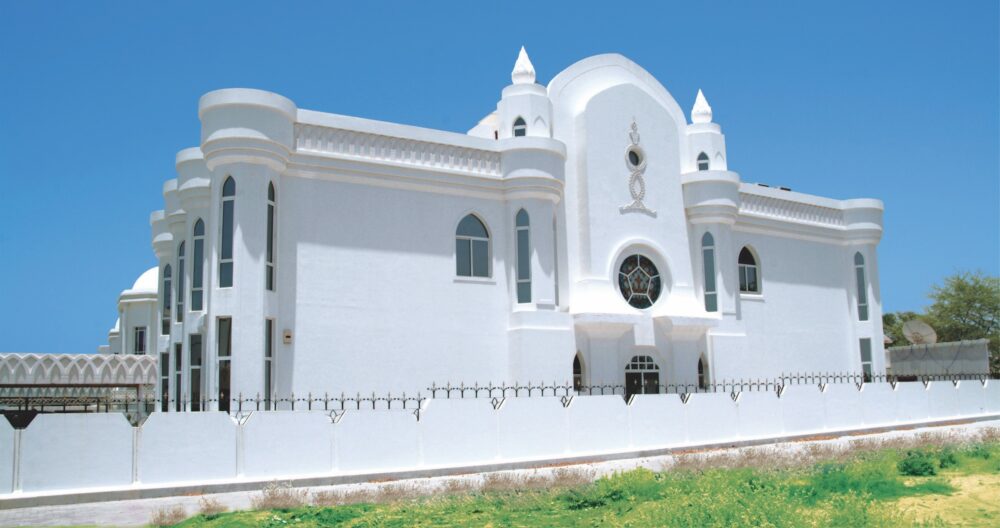
A modern Oman villa, but painted white and incorporating at least some characteristics of more traditional structures. Photo: Basil Al Bayati, Wikimedia Commons, CC-BY-SA-4.0
“Oman is different than the other countries because they tend to stick with the cultural habits of the past, with regulations that promote Islamic architecture,” he said.
Building regulations specify that building exteriors should be white, for example, which helps reflect the sun’s rays. That helps reduce the amount of solar heating, he said.
In contrast, Bahrain, despite being the smallest and least populous country in the region, had higher per capita energy use than the UAE, Saudi Arabia and Oman, Akin and his colleagues reported. They speculated that this was due to a number of factors such as lifestyle, climate, and building design.
- You might also like: An emergency brake for the climate
Materials also important
When asked about the single most important finding of his research, Akin had a simple answer: Concrete.
Yes, concrete, or more exactly, its main component, cement, which with its production contributes nearly three times as much to global warming as air transport.
“The concrete use in all of those countries are a little bit concerning, because it dominates the entire building stock, regardless of the country,” Akin said. “Even the traditional housing styles are also constructed with concrete in recent years because it’s much more affordable and it’s easy to use, it doesn’t require specific skills.”
Aside from the actual carbon dioxide release from making cement, concrete has another feature that makes it a climate bad guy.
“Concrete has low environmental performance compared to traditional materials,” Akin said.
For example, concrete structures in the region are rarely insulated, unless there are mandatory building regulations that require it. And with low energy prices, it can be easy and cheap to just turn up the AC, he said.
In this context, traditional houses built with local materials are best, since the materials used for their construction generally have the lowest emissions. Houses that are built using traditional methods also use less energy because they are designed to work in the hot climate.
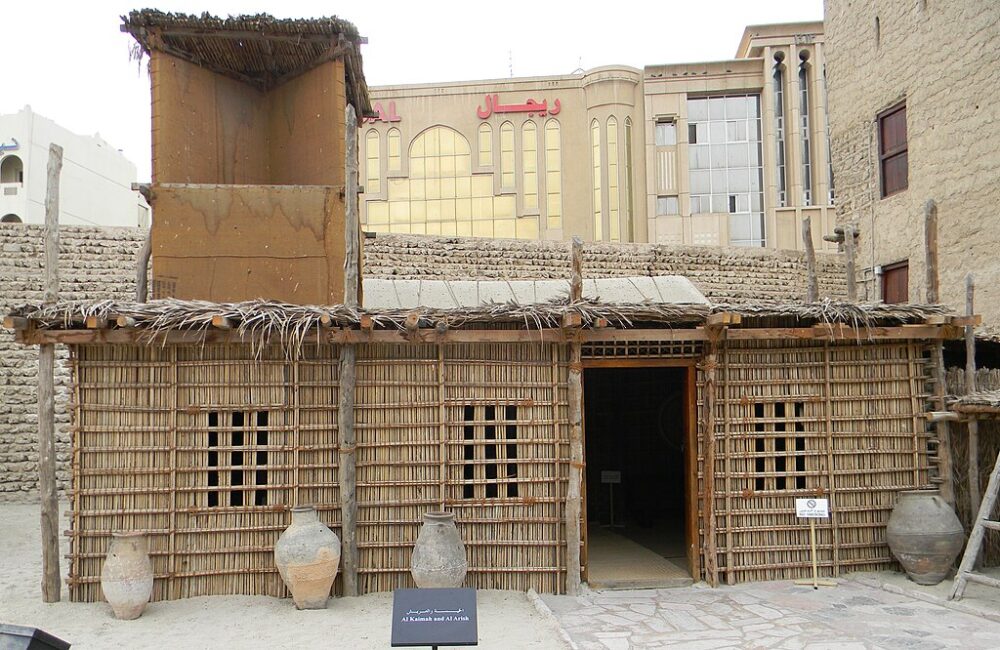
Traditional, or vernacular architecture from the UAE. This structure has been restored, and is on exhibit at the Dubai Museum. It shows the traditional wind catcher on the top of the building, which helps cool the inside. No one expects Gulf State residents to move into structures like these, of course, but they serve as a reminder that architectural design can contribute to lower energy use. Photo: Jazon88, Wikimedia Commons, CC-BY-SA-3.0
Unusual use linked to high consumption, population
Akin reported on a study that showed that implementing energy conservation measures in Gulf States’ residential buildings could cut energy use by up to 70 per cent. That’s no small percentage, given that housing overall is responsible for fully 70 per cent of all energy use in the region.
“This high share of residential energy use is very unusual for countries with this level of income,” Hertwich says. “We find similar shares in developing countries where subsistence production is important, and residences double as places of work. This is not the case in the Gulf. Here we have a high-consumption economy.”
Another concern is demography. As the fertility declines below replacement levels, smaller and smaller families come to occupy large villas. More floor area per person naturally means higher energy use per person.
The way forward
Akin and his colleagues hope these findings can make a difference in helping individual countries find ways to cut their energy and materials use.
One clear message is that given the region’s sunny climate, there is significant potential for renewable energy, such as thermal solar, photovoltaic solar and geothermal energy, he said.
Akin and his co-authors say their results can help identify opportunities to cut emissions and develop resource-efficient construction practices and tailored policies for improving the resource efficiency of buildings in the region.
“To mitigate the climate challenges of the future, we first need to have an understanding about the current situation of what’s going on in those countries. And then we can address them much more effectively by developing some targeted scenarios for particular building typologies like villas, apartments or skyscraper flats,” he said. “And the ratio among the building stocks is changing across those countries. So we believe that country-specific studies are quite important.”
Reference:
Sahin Akin, Chibuikem Chrysogonus Nwagwu, Niko Heeren, Edgar Hertwich,
Archetype-based energy and material use estimation for the residential buildings in Arab Gulf countries. Energy and Buildings, Vol. 298, 2023, 113537. https://doi.org/10.1016/j.enbuild.2023.113537
